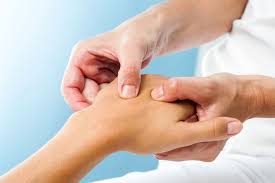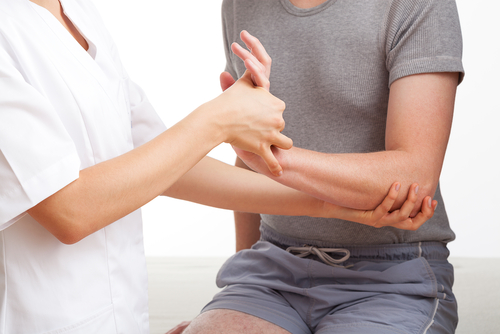Did you know that hand occupational therapy is one of the most important types of therapy for people who have suffered a stroke? In this blog post, we are going to discuss the importance of hand occupational therapy and how it can help improve the lives of those who have suffered a stroke. Stay tuned for more information!
Contents
What Is Hand Occupational Therapy?

Hand occupational therapy is a type of therapy that helps people regain the use of their hands after an injury or surgery.
The therapist will work with the patient to help them regain the strength and dexterity in their hands.
How Does hand occupational therapy Work?
Hand occupational therapy helps patients regain the use of their hands after an injury or surgery. The therapist will work with the patient to stretch and strengthen the muscles in the hand, as well as improve the range of motion. The therapist may also teach the patient how to use adaptive devices, such as button hooks and Velcro fasteners, to help with everyday tasks.
Why Is Hand Occupational Therapy Important?
Hand Occupational Therapy is Important in various ways. They are as follows:
- Hand occupational therapy can help patients regain the use of their hands after an injury or surgery.
- The therapist will work with the patient to stretch and strengthen the muscles in the hand, as well as improve the range of motion.
- The therapist may also teach the patient how to use adaptive devices, such as button hooks and Velcro fasteners, to help with everyday tasks.
- Hand occupational therapy can help patients regain independence and improve their quality of life.
What Are the Benefits of Hand Occupational Therapy?

There are many benefits of hand occupational therapy. Some of the benefits include:
Improving range of motion in the hands
Hand occupational therapy can improve the range of motion in the hands. This is important for people who have arthritis or other conditions that limit the range of motion in the hands.
Improving grip strength
Hand occupational therapy can also help to improve grip strength. This is important for people who need to be able to hold onto objects, such as those who use wheelchairs or walkers.
Improving fine motor skills
Hand occupational therapy can also help to improve fine motor skills. This is important for people who need to be able to do tasks such as writing or using a computer.
Reducing pain
Hand occupational therapy can also help to reduce pain in the hands. This is important for people who have conditions that cause pain in the hands, such as arthritis.
Improving coordination and dexterity
Hand occupational therapy can help to improve coordination and dexterity by working on tasks that require the use of both hands together. This can help to improve fine motor skills and prevent injuries.
Teaching patients how to use adaptive devices
Hand occupational therapists can teach patients how to use adaptive devices that can help them with their daily activities. This can include devices such as teachers, grabbers, and special utensils.
Improving independence
Hand occupational therapy can help improve independence by working on activities of daily living. This can include tasks such as cooking, cleaning, and dressing. Therapists can also teach patients how to use adaptive equipment to help with these tasks.
Improving the quality of life
It can help to improve the quality of life by working on activities that are important to the patient. This can include hobbies, work, and leisure activities. Therapists can also teach patients how to use adaptive equipment to help with these activities.
If you have a condition that affects your hands, this therapy may be able to help you. Talk to your doctor or therapist about whether this is right for you.
What Are The Techniques Used In Hand Occupational Therapy?

There are various techniques used in hand occupational therapy. They are as follows:
Grasping and release
This involves improving the strength and coordination of the muscles used in gripping and holding objects. The release is the ability to let go of an object. For example, someone who has had a stroke may need to relearn how to hold a toothbrush or fork.
Manipulation
This focuses on improving the dexterity and fine motor skills needed for tasks such as writing, using scissors, or doing up buttons. For example, an occupational therapist might work with a child on tasks such as finger painting, using Lego, or playing with dough to improve their strength and dexterity.
Dexterity
Dexterity is the ability to use your hands skillfully. Fine motor skills are the coordination of small muscle movements, such as in the fingers, typically in coordination with the eyes.
For many children, improving these skills is an important part of occupational therapy. It can help them to be more independent in their daily activities and improve their performance at school.
Grasp reflex integration
This helps to develop the ability to release an object when it is no longer needed.For example, when a baby is born, they have a strong grasp reflex. This is an important reflex as it helps them to hold on to their mother and feed them. However, as the baby develops, they need to be able to release this grip when they are finished feeding or when they want to explore their surroundings. If the grasp reflex is not adequately integrated, the child may have difficulty releasing objects and completing tasks such as writing.
Bilateral coordination
This is the ability to use both sides of the body together in a coordinated way. For example, when brushing teeth, both hands need to work together to complete the task. Developing bilateral coordination can be difficult for some children, as they may favor one hand over the other. This therapy can help children develop bilateral coordination and improve their ability to complete tasks that require the use of both hands.
Fine motor skills
Fine motor skills are the small movements that we use to complete tasks such as writing, drawing, and buttoning a shirt. These skills require coordination between the muscles in the hand and the eyes. therapy can help children develop and improve their fine motor skills.
Sensory integration
This helps to improve the way the brain processes information from the hands, for example, by helping to develop a sense of touch. For example, a child might have trouble knowing which way is up when holding a pencil. This can help children with sensory integration difficulties by providing activities that help them to develop a better understanding of how their hands work and how to use them effectively.
Thus, this therapy can help improve a child’s ability to perform everyday tasks such as dressing, writing, and eating. These are techniques through which an individual can relearn how to perform everyday tasks that have become difficult or impossible to do because of an injury, illness, or disability.
Hand occupational therapy can also help people who have had a stroke by retraining the muscles in the affected hand to regain some level of function.
Conclusion
It may be concluded that hand occupational therapy is very beneficial for patients with hand injuries. The therapy can help to improve the function of the hand, as well as to reduce pain and swelling. In addition, the therapy can also help to prevent further injury to the hand.
Physical Therapy help patients recover from pain. If you’re experiencing Back pain, Shoulder pain, Knee pain, Neck pain, Elbow pain, Hip pain, or Arthritis pain, a physical therapist at MantraCare can help: Book a physiotherapy session.


